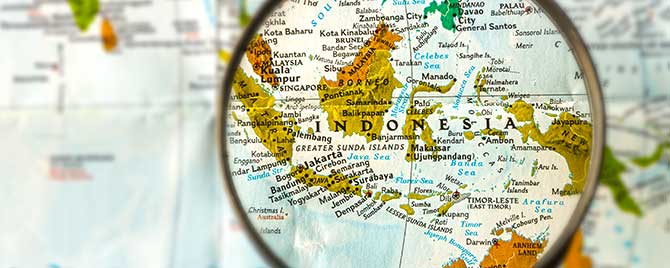Pacific Exchange
-

India’s Aadhaar Challenge: Balancing Data Rights, Financial Inclusion, and Innovation
India’s adoption of unique biometric identities, known as Aadhaar, has catalyzed inclusion and innovation in financial services. However, Aadhaar has always raised concerns over the appropriate use of digital IDs in the broader social fabric. With India’s Supreme Court recently restricting Aadhaar’s use, its role is now in question. Financial market participants will have to adjust to shifts in rules as they balance emerging data rights with gains in inclusion and innovation.
-

Pacific Exchange Best of 2018
The Federal Reserve Bank of San Francisco’s Pacific Exchange Blog covers issues important to banking in Asia and the Pacific Rim. Here’s a roundup of our five most popular posts of 2018.
-

Views into Asia’s Foreign Indebtedness (Part Two)
External imbalances are one factor that can compound a country’s ability to manage its foreign debts. Across Asia, current account surpluses and large stocks of foreign exchange reserves strengthen many countries’ ability to manage their external liabilities. Though several Asian economies face current account deficits or low reserve coverage, they continue to appear more resilient compared to the situations in Argentina and Turkey.
-

Views into Asia’s Foreign Indebtedness (Part One)
Recent developments in Argentina and Turkey have sparked concerns that other emerging market economies could be sitting on simmering vulnerabilities. A direct comparison of the region’s foreign debt finds that overall risk and apparent vulnerabilities are more contained in Asia relative to Argentina and Turkey. However, there are certain exposures in a handful of Asian economies that warrant close monitoring going forward.
-

Asia’s Open Banking Push
Countries around Asia are implementing laws and regulations to promote open banking to share data and enable third parties to provide products and services around a centralized platform. A move to open banking reflects the increasing digitization of Asia’s economy and the rise of technology platforms that envision a consolidated financial life for their customers. The impacts could be dramatic, increasing competition and promoting efficiency, integration, and inclusion, while also creating new risks.
-

Asia’s Emerging Virtual Banks
Several Asian regulators are amending existing rules to allow technology firms to own and run virtual banks, which will likely result in a number of new digital lenders. This has triggered debate and discussion about licensing requirements, risk management, and consumer protection.
-

Can Asia’s Fintech Giants Reduce Remittance Costs?
As they transform the payment systems in countries like China and India, Asia’s fintech giants are now setting their sights on cross-border remittances. Will the new entrants drive costs down in a region dependent on payments sent home by overseas workers? A number of traditional financial institutions and non-bank start-ups are already trying to solve the problem, which could help promote equitable, inclusive growth in developing Asia.
-
China Tightens Bad Loan Recognition Rules
China’s recent decision to tighten bad loan recognition standards is an important and necessary step to repair small lenders’ balance sheets. The decision also means there will likely be significant recapitalization needs among lenders down the road, in addition to expectations for slower bank loan growth.
-

Testing Time for Emerging Market Resilience
Indonesia’s economic fundamentals have improved considerably since the “taper tantrum”, with the International Monetary Fund (IMF) and ratings agencies sanguine about its performance. But as global financial conditions tightened this year, volatility seems to be on the rise again putting the resilience of emerging markets to the test.
-

Asia Prepares for New Bail-in Bonds
A decade removed from the global financial crisis, the world’s most systemically important banks are preparing to meet new rules on total loss-absorbing capacity (TLAC) by 2019. New TLAC-eligible debt securities, popularly known as “bail-in” bonds, have emerged post-2008 as part of efforts to minimize the need for taxpayer bailouts in future crises. In Asia, banks in Japan and China will face tailored versions of these requirements based on the unique features of each country’s banking system. Below, we examine the state of TLAC in Asia.